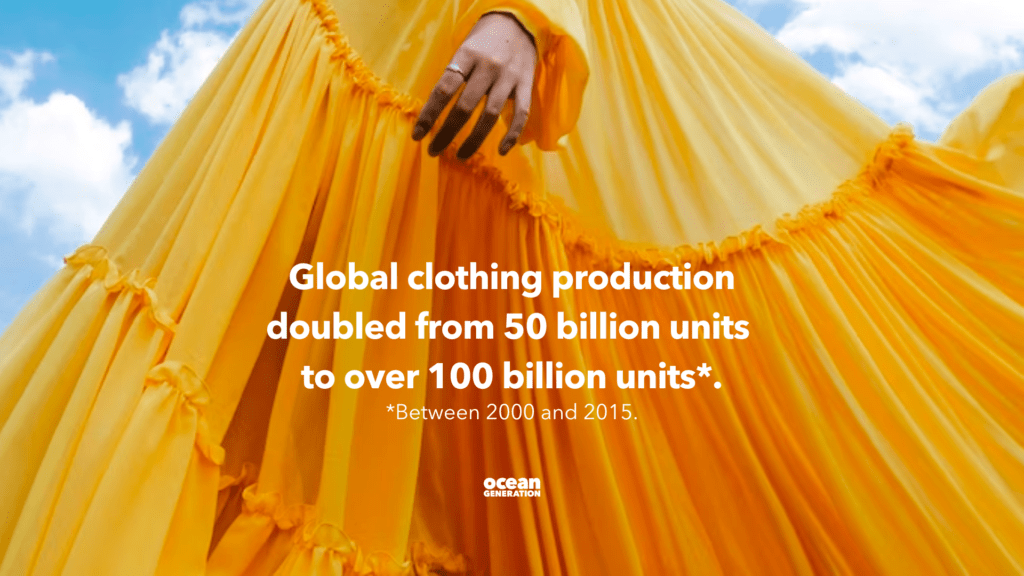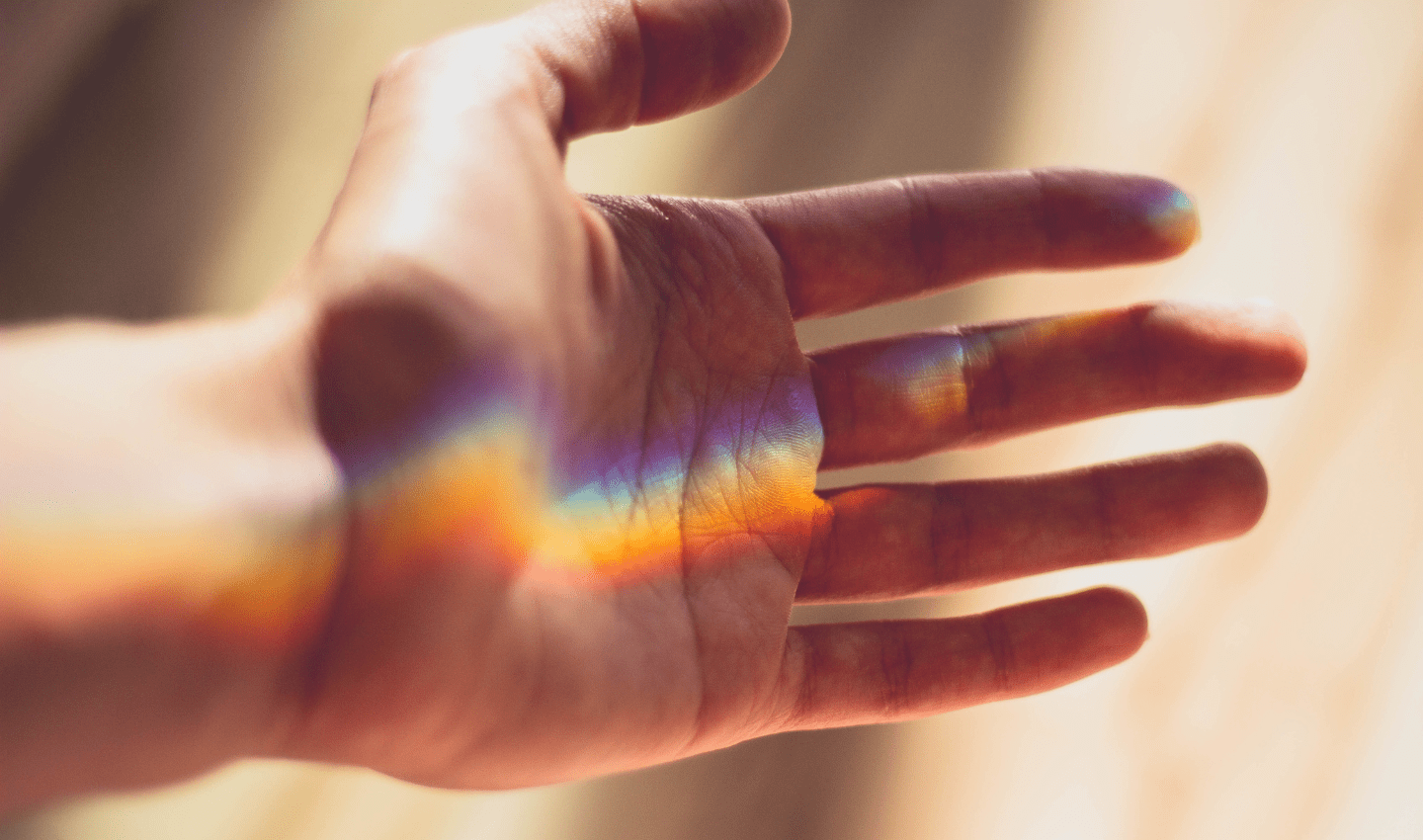- Our Future: Solutions
- Our Impact: Threats
The impact of fashion on people and planet: What we purchase

What you need to know about the environmental impact of the textiles in fashion.
Textiles – including clothing and footwear – are an everyday essential across the world. Our clothes can not only keep us warm in the cold, dry in the rain, and protect us from the sun, but they can also be an invaluable way to express ourselves through fashion.
Despite their prevalence in our lives, it can be easy to overlook where our textiles come from, and the impact that fashion items have on both people and the planet.

Let’s look deeper into the textile industry by discussing the following key areas:
- Overconsumption
- Environmental Impacts of Textiles
- Societal Impacts of Textiles
What are the origins of the textiles that we know and love?
It is important to consider the behind-the-scenes processes involved in textile production and distribution. These are illustrated below.

What’s the impact of overconsumption in fashion?
With the rise of fast fashion and increasing connectivity in this digital world, getting swept up in fashion trends has never been easier.
But let’s slow down for a minute to think about our changing consumption habits. Between 2000 and 2015, clothing production doubled from ~50 billion units to over 100 billion units. This trend is driven by an increasing middle-class population globally and rising per capita sales in mature economies.
Why are sales rising? Fast fashion is the prime culprit here.
The fast fashion phenomenon began in the 1990s, with low-priced and short-lived items being generated by cheap manufacturing. Today, influencers on various digital platforms often promote rapidly changing trends, driving frequent consumption.
On top of this, we wear clothes significantly less during their lifespans. This is not without considerable economic loss, with US$ 460 billion of value lost globally each year from people throwing away clothes they could still wear.

How do textiles and the fashion industry impact the environment?
It isn’t just the economic loss that is a problem, however, as textile production, use, and disposal have significant environmental impacts which we’ll explore next.
In 2018, the fashion industry produced ~2.1 billion tonnes of greenhouse gas (GHG) emissions globally. This weight is equivalent to that of 350 million adult male African Savanna elephants. GHG emissions are important to consider as they contribute to climate change.
The textile value chain (the whole product lifecycle) is notoriously water intensive, consuming 215 trillion litres of water annually. This is equivalent to 86 million Olympic-size swimming pools.

Overexploitation of our finite water sources can lead to major environmental disasters. An example of this is the Aral Sea Crisis, where water extraction for cotton irrigation desiccated what used to be the fourth largest lake in the world.
Chemical contamination of textile wastewater is an environmental concern. The textile industry uses over 15,000 chemicals, many of which are harmful to the planet. Toxic substances such as reactive dyes and heavy metals often pollute local aquatic ecosystems.
Did you know that washing textiles releases microfibres into the environment?
All textiles are culprits, whether natural (such as cotton), semi-synthetic (including viscose) or synthetic (for example polyester).
It was found that an average 6kg wash load of synthetic acrylic fabric releases over 700,000 fibres. These microfibres have been found in a range of environments, from the deep sea to Mount Everest, and can be ingested by aquatic organisms including sea cucumbers and hermit crabs.
So far, we have investigated the impact of textile production and use on the environment.
What is the fate of discarded textiles?
In 2015, just 13% of total material input was recycled following clothing use. Most post-consumer waste is instead incinerated, landfilled, or exported to developing countries to be sold in second-hand markets.

This is not to mention the pre-consumer waste comprised of new, unworn, or returned clothes that fail to be worn by consumers. The result? The accumulation of enormous quantities of textile waste.
What are the societal impacts of textiles?
While textiles are undeniably harmful to the planet, their production, use and disposal can have negative impacts on people too.
The untreated textile wastewater that pollutes aquatic ecosystems also harms the communities using contaminated water systems for fishing, washing, and drinking.

Microfibres released into our waterways infiltrate human diets via tap water, beer, sea salt, and seafood, and have even been detected in human lungs.
Textile waste exported to developing countries is sorted for sale in second-hand markets by low paid workers in unsafe conditions.
The impacts of the textile industry are unevenly distributed, with the brunt being taken by developing countries where textile and garment manufacturing occurs. This is despite consumption primarily occurring in developed countries.
Sounding familiar? The fate of textile waste mirrors that of both plastic and electronic waste.

So, what is being done to repair the environmental impacts of the textile industry?
There has been progress at reducing the environmental impact of the textile industry at various stages, from treating textile wastewater using plants to the degradation of textile waste by enzymes produced by bacteria and fungi.
While these innovations are exciting, further development is needed before wider use.
In the meantime, increasing awareness of the negative environmental and societal impacts of the textile industry has resulted in rising interest of new business models. Reselling, renting, repairing, and remaking increase product lifetimes, and this is a vital step in the move towards ‘slow’ fashion.
What is my role in the future of sustainable fashion – specifically, textiles?
You, as a textiles consumer, can drive change.
Here’s what action you can take:
- Try to rethink your relationship with clothes. Some helpful tips on how to become a slower, more mindful consumer can be found here: How to take the fast out of fast fashion.
- Have a think about whether you need and will value that garment before making a purchase.
- Browse a second-hand shop before buying new.
- Refuse to purchase unnecessary or low-quality, less durable clothes where possible.
- Think before putting your clothes in the wash. If possible, air out clothes or hand wash to remove specific stains. Try to avoid tumble drying too.
- Look into washing machine filters or washing bags designed to catch microfibres.
- Explore renting, leasing, updating, repairing, or reselling textiles to extend their lifespan.
- Try your hand at simple textile repairs, such as sewing buttons or patching up a hole, either by teaching yourself or attending a local repair workshop.
- If your garment is truly at the end of its lifespan, recycle it at a designated recycling point.




